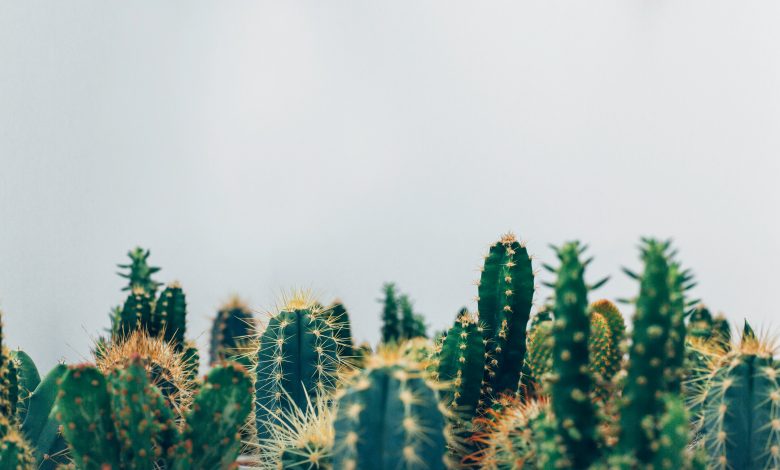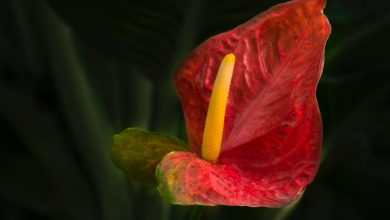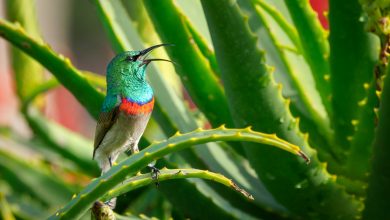How to Grow a Cactus Garden

Cactus gardens are a great alternative for those who are seeking to do something different with their yard or home. Cacti are relatively easy to care for and are versatile when it comes to their appearance. You can have them just about anywhere, and they are going to thrive. These plants can be your garden’s best friend. If you are looking for a unique look to your backyard plot, choose the cactus. These prickly plants are going to make you the talk of the neighborhood as they continue to beautify your yard for years to come.
Plant Wisely
Cactus gardens can flourish in cold and hot climates. The key element to proper growth lies in the soil. Cacti need dirt that has good drainage and should have some compost as well. A guideline that a lot of growers follow has an even mix of horticultural sand, compost, and grit or gravel. When you mix the three ingredients, it becomes the ideal soil environment for these types of plants. You can also purchase this mixture if you prefer not to make your own.
If you live in a desert region, you can easily plant your cactus into the ground. This area is where the plant grows best. However, if you don’t live in this type of climate, then it makes more sense to plant the cacti in pots. This way, you can easily regulate soil conditions and outdoor elements.
When you are ready to build your cactus garden, decide if you want to grow them indoors or outdoors. Planting methods differ, so you need to know what is appropriate for you.
Outdoor Gardens
When you start an outdoor cactus garden, you need to make sure your soil mixture is properly aerated and well-drained. These plants are susceptible to root rot, so take care that your garden is flat to eliminate pooling water. You should also choose a location in your yard that receives full sun. Cacti need at least six hours of sunlight to grow properly.
Indoor Gardens
If you are planning on planting an indoor garden or terrarium, start by layering a cover of gravel at the bottom of your pot or container. The gravel should be as level as possible. Then, apply your cactus soil mix on top. The soil should be enough to cover the roots of the plants. Plan on setting your garden up somewhere it can receive sunlight through your windows.

Choosing Your Plants
When you have your soil down, it is time to choose your plants. It’s best not to try to grow a cactus plant from seeds. They grow over decades, not months. Go to your local nursery to check out the selection they have. There are hundreds of varieties to pick from, so don’t miss out on this fun.
Popular cacti for your indoor terrarium and outdoor garden include:
Hens and Chicks
These plants grow in a circular pattern that resembles a rose bloom. These low maintenance cacti are considered the darling of their plant species. The central rosette grows runners that spread out in no distinct pattern. As the runners unfurl, smaller blooms grow into little rosettes. The main part of the plant flowers, seeds, and then dies. The smaller plants that are left behind take over. It is a sight you can’t look away from.
This plant is considered a perennial and can grow up to a foot tall. The flowers can be white or pink and are vibrant when in full bloom. The cactus is also known for its lovely foliage color. You can pick from blues, greens, purples, and even golds. For those who plant this cactus outdoors, you should know that the plant is deer resistant and provides thick ground cover if you need it. This plant is versatile and does well in both indoor and outdoor environments.
Pincushions
Pincushion cacti are stocky plants that are perfect for a novice gardener or one with experience. The small perennial grows no larger than about six inches in height. They are shaped in a ball and have white spikes all over the surface of their exterior. When you handle a pincushion, you have to wear gloves.
Like most cacti, pincushions do well in dry conditions. If you are planting these indoors, use an unglazed pot to allow moisture to evaporate. As it matures, this cactus grows smaller pincushions around it. You can keep the growth as is, or you can divide the cactus and replant them in another pot or location. After several weeks, pincushions show their full splendor when they bloom. When planted outside, the flowers start to appear in the spring and have a light and airy scent. Pincushions are generally indoor cacti but usually do well wherever they are planted.
When it comes to maintenance, you need to keep it simple. Pay attention to any signs of rot or decay. Those diseased areas should be cut off immediately. From there, all this little plant needs is sunlight and water.
Sea Urchin
This cactus also appreciates a lot of sunlight. There are dozens of this species that you can include in your garden. The sea urchin cactus is best defined by the column-like cactus that grows several feet high. This mother cactus is stunning but is best suited for outdoor gardens. As it grows, the plant does produce offshoots that you can take indoors.
The sharp spines protect the skin of the cactus and also deter animals and pests from eating it. When you water the plant, allow the soil to dry between waterings. This hydration method should be applied to other cacti, as drainage is essential for proper growth. You can also fertilize the soil to encourage development and more abundant blooms, but it is not necessary.

Hedgehog Cactus
There are over 50 species of hedgehog cacti that are available for planting. These plants do well not just in hot climates, but they can survive freezing temperatures as well. The cactus is distinct because of its ribbed stems that grow around a cylindrical base. In the spring and fall, the hedgehog cactus produces flowers that you can’t miss. Hot pinks, deep reds, and bright yellows are just some of the blooms you can expect from this one of a kind plant. At night, the flowers close until daylight.
When you plant the hedgehog cactus, you should do so in groups. This planting technique gives your garden a vivacious effect. When these cacti are in full bloom, the visual is stunning. These plants do well in scorching and dry environments. Plant them in gritty soil and give them hours of sun, and you are going to have a cactus that sticks around for a long time.
Crown Cactus
The crown cactus is a simple plant to grow both indoors and outside. It is a widespread species that produces frilly flowers growing around the top of its base plant. These blooms frequently show throughout the year, so plant these wherever you can if you are looking to add more color to your cactus garden.
The crown cactus also grows offshoots that grow around the main plant. These smaller clusters typically have flowers that grow from the bottom of the plant or in between the groups. You never get the same crown cactus twice. These cacti enjoy light and thrive in a range of conditions. While they are a natural plant to grow, try to avoid extremely high temperatures if you can. They tend to wilt under severe heat. Crown cacti can easily be repotted and replanted anywhere you want. Take these plants and spread them widely among your other plants. They provide an incredible dimension that you never knew you needed.
Winter Cactus
The winter cactus is a sought after holiday plant that has festive flowers growing from its foliage. This plant is often seen indoors, and they produce tubular flowers in pink and purple hues. These plants are unique in that they don’t prefer dry climates. Winter cacti do well in a humid environment and are found naturally in the rainforests of Brazil and other countries in South America. Since they crave humidity, you do need to water these cacti more often than others.
The winter cactus is also known as the Christmas cactus for a good reason. Its blooms show closest to the holiday they are named after. When you plant this cactus, they need bright but indirect sunlight. In the summer, you can move the plant to a shadier area if the heat climbs above room temperatures.
You can prune the plants in early summer to facilitate growth. You can also use those cuttings to make more cacti if you choose. These plants are sensitive to stress, so if you experience drooping flowers, you need to ensure the soil, temperatures, and light are right. When you maintain this plant well, the growth can be quite magnificent.
Blue Flame
The blue flame cactus is a large plant that is perfect for your outdoor garden. This cactus can grow as high as 13 feet and nearly as wide as that. When you see a blue flame, the first thing you notice is its upright and reaching shape that has a bluish hue to its spiky stalks.
The cactus also produces a purple fruit that is edible and tasty. It can best be described as a cross of blueberry and cranberry. These outside plants make great focal points in your garden. They can either be planted in a large pot or directly in the ground.

Candelabra Cactus
When you think of a typical cactus, the candelabra plant probably comes to mind. These tall plants reach about 12 feet tall and are known for their three-part construction. The extended tubular stalk is flanked by two shorter stems that reach up to the sky. When they are in bloom, the flowers open during the day and close at dusk.
The candelabra cactus also produces fruit that can be eaten. Although they are not as tasty as some other cactus fruit, there are many people who enjoy their acidic taste. Plant these cacti outdoors and in full sun. You can’t go wrong with the traditional cactus look. They are agile plants that can grow on hillsides and other uneven areas. It does like water, so you may need to water the candelabra cactus more than other cacti varieties.
Golden Ball Cactus
This cactus plant grows to about three feet in height and is known for its golden-hued spines. The golden ball plant forms clusters that are striking to look at. The plant is also fire-resistant and perfect for areas that are dry and desert-like.
This type of cactus differs from a lot of other species in that they need shade when the sun is at its hottest. This plant is a well-known cactus to have in outdoor gardens. When sunset comes, the spectacular deep gold color looks even more impressive as the day is ending. Add these gorgeous bunches all along your garden bed. You aren’t going to regret that you did.
Old Man Cactus
The old man cactus is a uniquely named plant that makes an impression on anyone who notices it. This popular plant is known for its tall growth that is covered in dense hairy spikes. The white spines are softer than most plants and look great against any backdrop.
A lot of gardeners who include the old man cactus in their garden often wash the spikes to keep them white. It is not necessary, but if left alone, they may take a yellowish hue. Some varieties of this plant can reach nearly 50 feet, but its offshoots can be cultivated to more manageable heights. The side stems are known to play host to flowers that bloom in the dead of night. The colorful flowers are a stark contrast to the white exterior that grows full and lush in the bright sun.
Orchid Cactus
For those who crave both cacti and flowers in their gardens, the orchid cactus is for you. This pretty plant is native to tropical areas and can grow hundreds of feet in the wild. If you want these plants in your garden, you don’t have to worry about these epic dimensions. They can grow several feet but look stunning in your backyard garden.
The flowers of the orchid cactus can grow large as well. It is not uncommon to see the pretty blooms extend five inches or more. You can plant these cacti in the ground or hang them off trees for an incredible display. You can expect the flowers to either come in red, pink, white, orange, or yellow. As they grow, make sure that they are getting partially shaded sunlight.
Peanut Cactus
If you are looking for a smaller type of plant to cultivate, consider the peanut cactus. This cactus grows low to the ground in cylindrical shapes that are less than one foot in height. When planted outside, the peanut cactus blooms in the spring and summer.
These cacti also do well indoors. When you plant them in containers, make sure they are sown in shallow containers that have a good mixture of gravel and soil. The peanut cactus produces bright red flowers that grow on top of the spiked barrel and do so in clusters. Gardeners who are looking for ground coverage with flair should know the peanut cactus checks both boxes.
Prickly Pear Cactus
This cactus brings a traditional look to your outdoor garden. This large plant can grow over fifteen feet tall and six feet wide. You probably know these plants best by its yellow or red flowers that poke through the spines of the offshoots.
These plants are obviously at home in drought-tolerant areas, but they can also grow well in meadows and lusher landscapes. The fruits of most of these cacti are edible. The branches of this plant can also be eaten and are considered a vegetable. If this sounds intriguing to you, be careful when harvesting the plant. The fruits and the branches contain spikes that can inflict substantial damage if you are not careful. You can cut off these spines with plant shears or a sharp knife before you indulge in the rare fruit.
Star Cactus
This gorgeous plant is known for its twisting spines. As the cacti grow, they take on a yellowish-brown color that is striking alongside a desert landscape. As they mature, the plant sprouts bright yellow flowers that catch the eye when they are in full bloom.
When you plant the star cactus in the ground, do so in masses. Cluster a handful of these plants near big rocks, or you can plant them in a wide container. This cactus gets its name from the star-shaped fruit that grows mid to late summer. You can easily cut and replant these cacti as they root reasonably quickly. Ideally, star cacti can grow up to a few feet, but most varieties hover around a foot tall. If you want to take these plants indoors, you can. With proper maintenance, they can grow in cooler environments with ease.

Caring for Your Cacti
Follow the advice below, and you can have an indoor or outdoor garden that can last a lifetime.
Soil
As stated previously, your soil should have a perfect mix of gravel, horticultural sand, and compost. Never use garden or potting soil in the place of this mixture. Your plants cannot grow properly in other soils. Cactus dirt is formulated to allow water to run through it. The top soil stays moist while the gravel helps to wick away added moisture. Cacti do not like their roots to stay wet. This is how rot happens. Your plants can quickly die from overwatering rather than underwatering.
From time to time, take care to check on the earth. Ideally, you should only water these plants once or twice a month at the most, and the dirt needs to completely dry before the next watering. Cacti are a hands-off plant, so don’t get too heavy-handed with the watering can.
Sunlight
Cacti need light! This sentiment can’t be stated enough times. Most of these plants are native to dry and desert-like environments and expect the heat no matter if they are outside or inside. When you are planting your garden in the outdoors, choose a location that has at least half a day of sunlight. There shouldn’t be much shade, and they can withstand extreme weather conditions.
For those who have a cactus terrarium inside, you still need to seek sunlight. The indoor garden needs to be near a south-facing window to get the best sun for your plants. You may need to move your pots and containers around a bit until you find optimal lighting.
Water
You only need to water your cacti every other week at most. Some species may need even less than that. It takes a lot of effort to kill off these types of plants. If you forget to water them, it is not the end of the world, as they can bounce back quickly. Hydrate them normally, and they return to their full splendor in no time.
Pots and Containers
When you plant cacti in pots, you need to ensure that the containers have drainage holes. While they can thrive in any type of pot, they still need to release excess water when necessary. These containers should never sit in water and should be big enough to hold the roots. When you start to see these roots peek out of the soil, it is time to move the plant to a larger area or pot.

Cactus gardens are an innovative way to bring style and character to your garden and home. These hardy and eye-popping plants are conversation starters in any household. Take care when you choose the cacti for your garden. Have a vision of what you want, and find the appropriate foliage to accomplish that. With hundreds of varieties to choose from, you can’t go wrong with whatever you go with.



